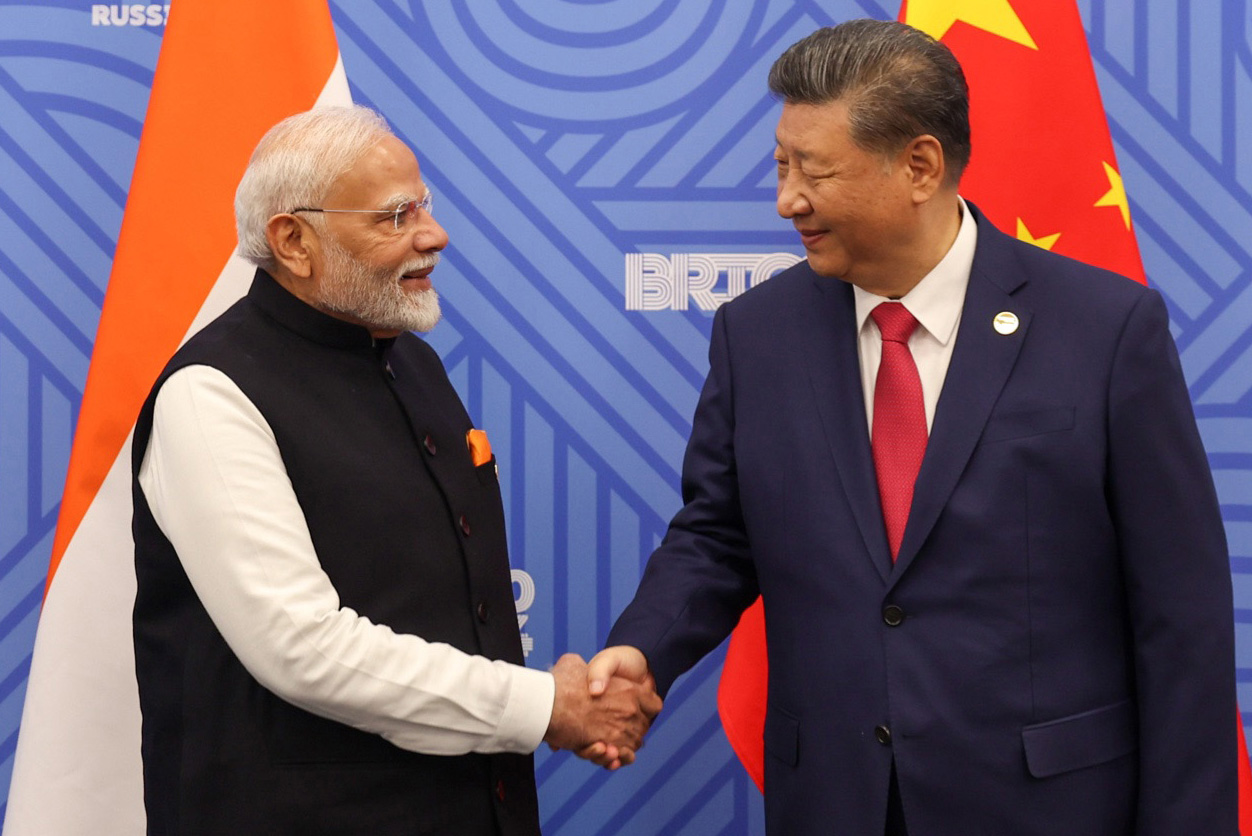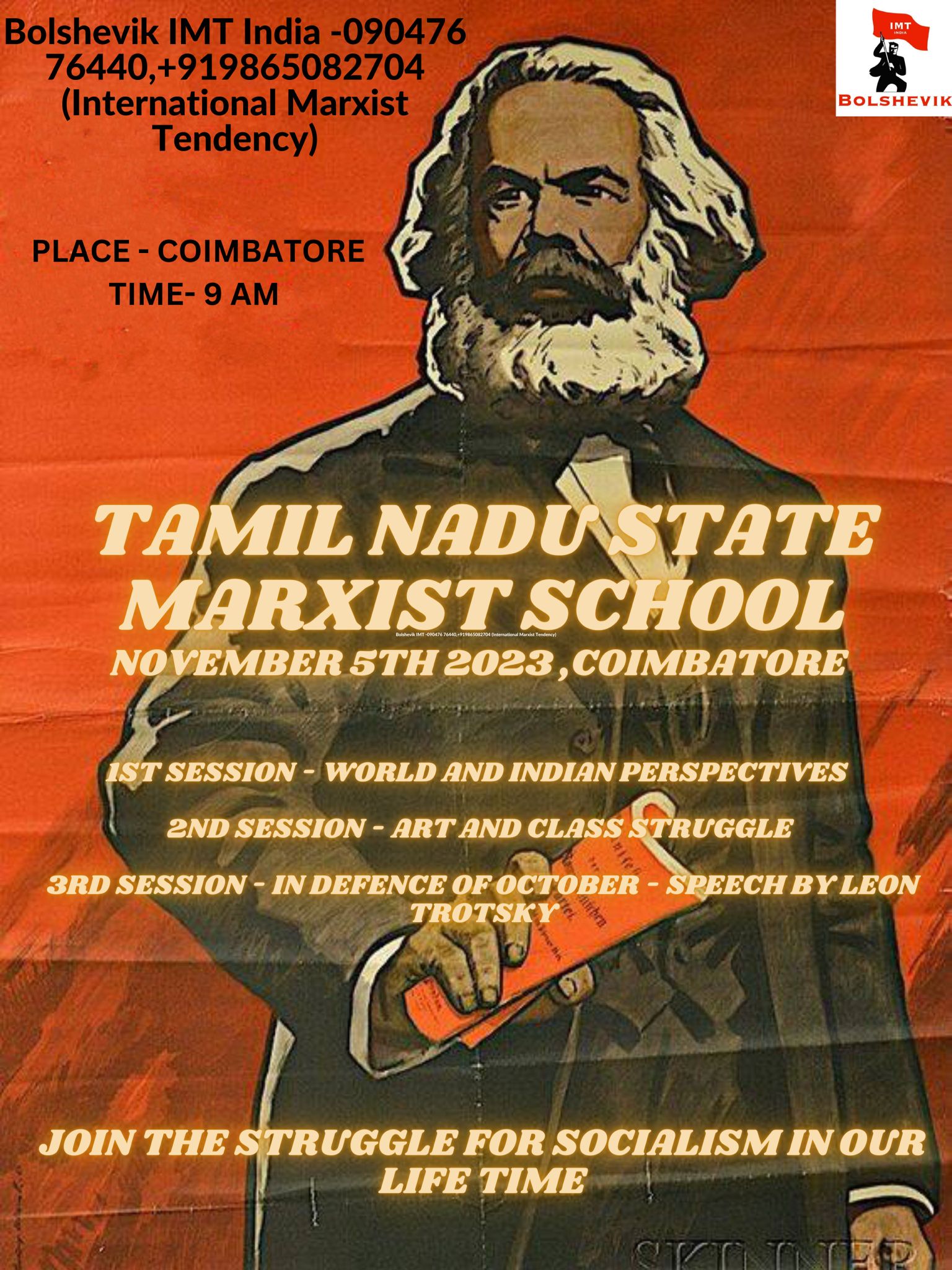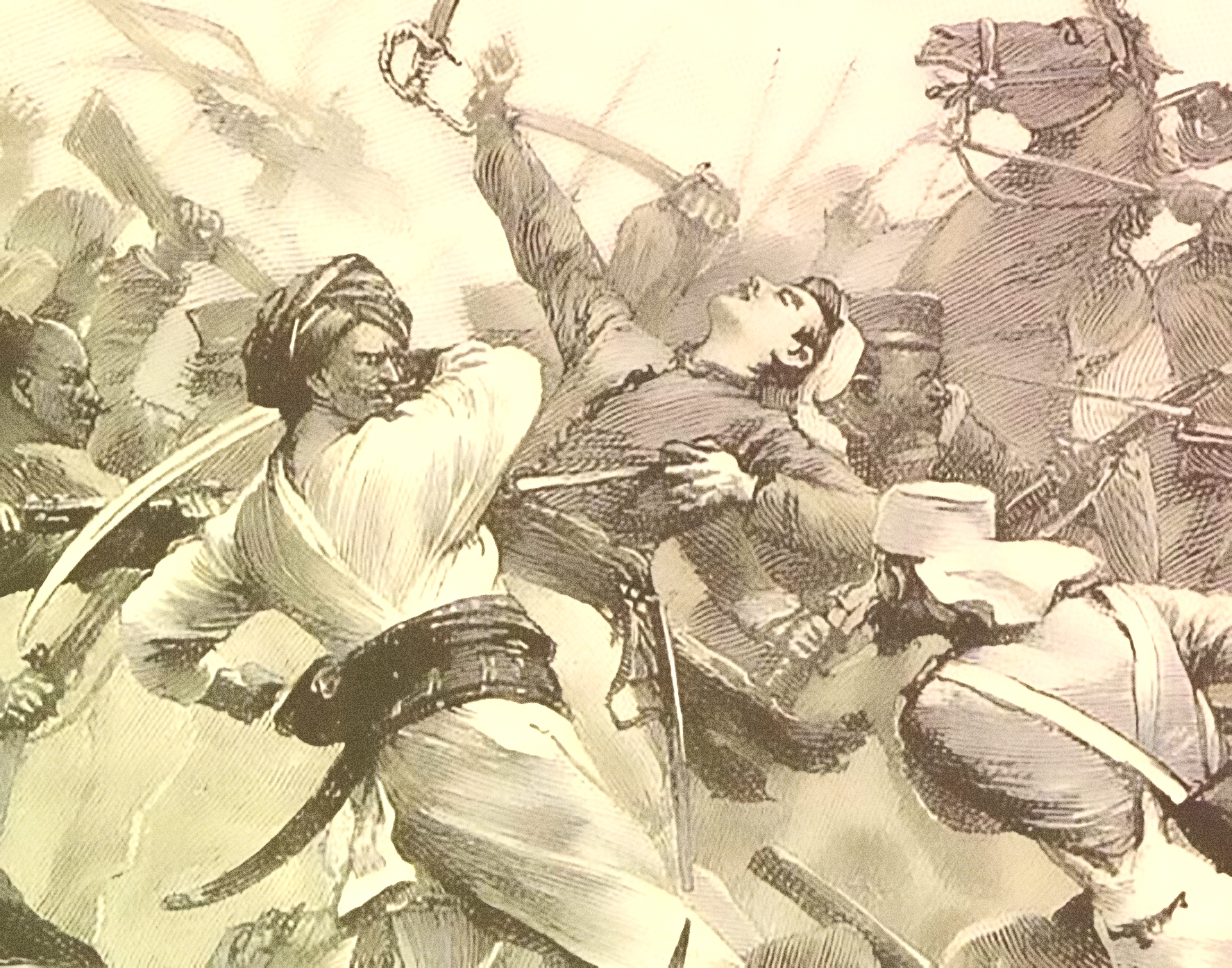President Donald Trump has taken a sledgehammer to decades of US foreign policy in South Asia by imposing 50 percent tariffs on a swathe of Indian goods. This is a slap in the face for Trump’s former close ally Prime Minister Narendra Modi, who is now seeking more reliable friends in Beijing. The entire diplomatic picture in the region has been turned upside down, while Indian workers and poor brace for the economic fallout.
The measures from Washington at the end of August sent shockwaves through every government building in New Delhi. Trump’s additional 25 percent tariffs on Indian goods – an escalation from the ‘reciprocal’ 25 percent tariffs imposed mere months ago – represent nothing less than a declaration of economic warfare against a nation Trump now dismisses as a “dead economy”.
The ostensible justification for these tariffs is India’s role in helping Russia circumvent western sanctions, with the Trump administration labelling India a “laundromat” for Russian oil. It is true that India has done very good business buying Russian crude, refining it, and selling it to European countries… who cannot buy it directly because of sanctions they themselves imposed during the Ukraine War. India’s imports from Russia exploded from a mere $9 billion in 2021 to $68 billion in 2025.
Indian officials have been quick to point out the rank hypocrisy of these new sanctions. External Affairs Minister S. Jaishankar said at an event in New Delhi: “It’s funny to have people who work for a pro-business American administration accusing other people of doing business. If you have a problem buying oil or refined products from India, don’t buy it. Nobody forces you to buy it.”
The ‘democratic’ European nations have spent the last three years sanctimoniously lecturing the world about ‘standing up to Russia’ with their sanctions, but have all been purchasing Indian-refined petroleum products, knowing perfectly well their origin. In fact, it was the Americans who first encouraged India to buy Russian oil and gas! As admitted by US Ambassador to India Garcetti, they did so because they didn’t want the price of oil spiralling out of control.
Moreover, China is a bigger buyer of Russian oil, and Saudi Arabia, Japan and Turkey are not far behind India. So why has the latter been singled out?
The ‘Maharaja of tariffs’
Behind all the bluster, on the one hand, Trump is determined to end US involvement in the Ukraine war and wants a deal. He’s becoming frustrated at Putin’s unwillingness to commit to a ceasefire while Russia is winning on the battlefield. These ‘reciprocal tariffs’ are intended to put the screws on Russia by discouraging India from buying its sanctioned energy products, and help force a deal. Trump also dislikes the fact that India gets most of its arms from Russia: not for moral reasons, but because he’d rather Modi buy from American companies.
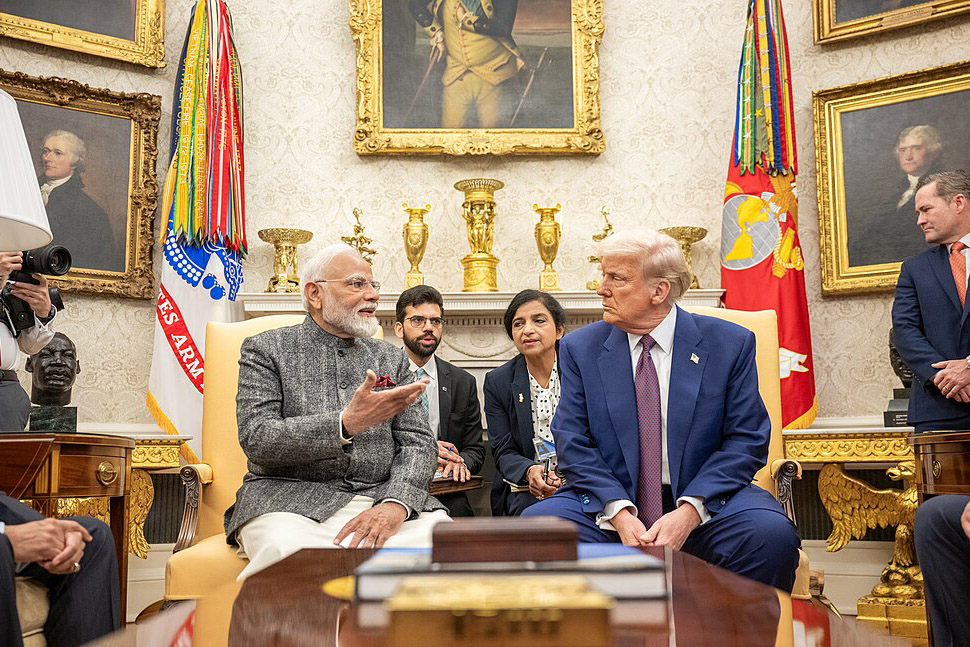
But that’s only part of the story. Trump’s other grievance comes down to his belief that Uncle Sam is being screwed over by India’s “obnoxious non-monetary Trade Barriers”, to use the President’s term from July. “While India is our friend, we have, over the years, done relatively little business with them because their Tariffs are far too high,” Trump bluntly wrote on his social media platform Truth Social.
India currently imposes tariffs of nearly 39 percent on most American agricultural products – with rates climbing to 45 percent on vegetable oils, 50 percent on apples and corn, 60 percent on dairy products and 70-80 percent on rice. This led one of Trump’s main economic advisors, Peter Navarro, to dub Modi the “Maharaja of tariffs”. Bringing these trade barriers down was a major focus of five rounds of failed negotiations prior to the imposition of these new US tariffs.
Since independence in 1947, India has always placed extremely high tariffs on foreign goods. In recent years, these are focused on artificially protecting its automotive industry and especially its backward and underdeveloped agricultural sector from foreign competition. In other words, rather than investing in modernisation, the Indian capitalist state intervenes to maintain 45 percent of its rural population in conditions of semi-feudal misery.
From ‘howdy’ to humiliation
Trump and Modi formerly had a very friendly relationship (described as a ‘bromance’ by the Washington Post), particularly during Trump’s first term. The two ‘populist strongmen’ held respective rallies for one another: ‘Howdy Modi’ in Houston in 2019, followed by ‘Namaste Trump’ in Modi’s home state of Gujarat in 2020.
The two leaders regularly embraced before the cameras, united in their nationalist demagogy and (apparent) opposition to China. Modi actually campaigned for Trump among the American-Indian diaspora with the slogan ‘Ab ki bar Trump Sarkaar’ (‘From now on it’s Trump’s government’).
The Trump Organization has invested heavily in Modi’s India, throwing up a number of buildings. The president and his daughter Ivanka were even invited to the wedding of Anant Ambani, son of Modi’s longtime fatcat ally Mukesh Ambani. Modi also welcomed Trump’s reelection heartily in 2024, and Ambani attended his pre-inauguration dinner. The two leaders seemed like bosom friends. What has caused these cordial relations to sour?
The immediate flashpoint was the India-Pakistan conflict in May, which ended in a ceasefire for which Trump publicly claimed credit. Trump was likely displeased with a US strategic ally threatening a disastrous new foreign war by attacking Pakistani-held territory in occupied Kashmir. Thus, he sought to put Modi in his place and remind him who the big boss is.
This was a massive humiliation for Modi. New Delhi immediately denied that Trump secured a ceasefire unilaterally. Modi allegedly made an angry phone call to Trump to complain, already feeling pressure from his rabid Hindutva allies, who were annoyed that his attacks on Pakistan did not go far enough.
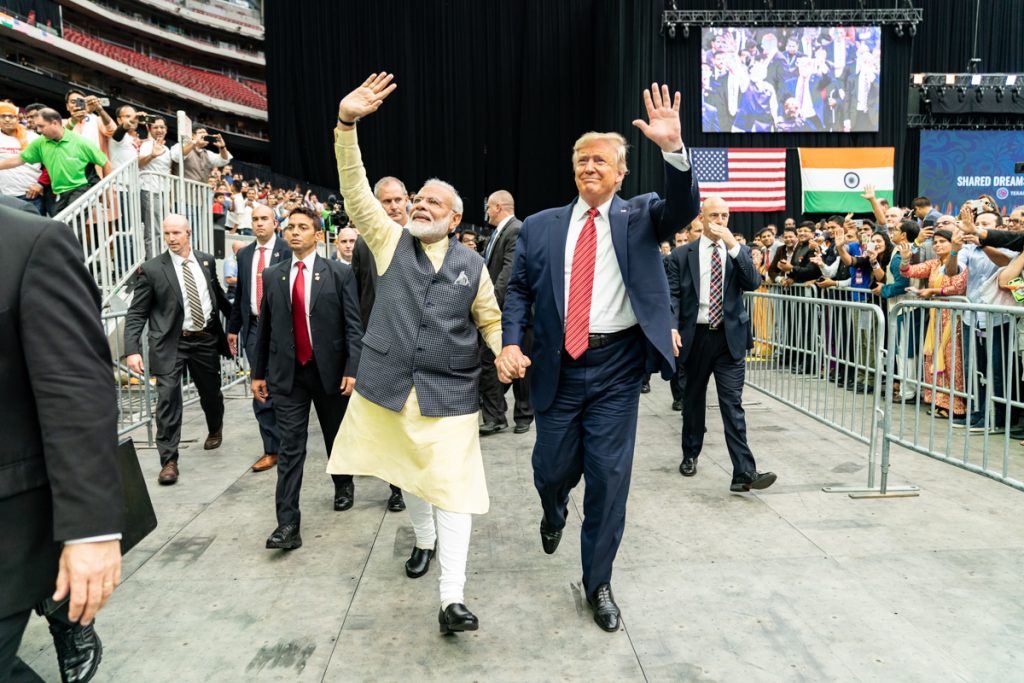
The ruling clique of generals in Pakistan, by contrast, saw an opportunity to profitably grovel. They wholeheartedly embraced Trump’s version of events, puffed up his ego, and even recommended he receive the Nobel Peace Prize!
Since then, they have promised all sorts of privileged access to Pakistan’s mineral wealth. In return, the US has hit Islamabad with comparatively light tariffs of 19 percent. Trump recently announced a deal with Pakistan that would involve “developing their massive Oil Reserves”. He added, “Who knows, maybe they’ll be selling oil to India someday!”, fully aware of how this would be received in New Delhi.
This is a big turnaround. Successive US administrations have committed huge diplomatic efforts and tens of billions of dollars in FDI to build India up as a reliable ally in the Indo-Pacific and a bulwark against Chinese influence. Meanwhile, Pakistan has historically been a close ally of China. How can the 180-degree turn be explained?
In reality, the war was not the cause of the blowup between Trump and Modi; it was simply the straw that broke the camel’s back. While these economic nationalist strongmen spoke favourably of one another for a time, their fundamental interests are at odds. Protectionism means the export of unemployment from one country to another. Modi’s trade barriers, which he primarily uses to support the most backward sectors of India’s economy, are in direct contradiction with Trump’s ‘America First’ agenda. A clash was inevitable.
The simple reality is that Trump cares not one iota for India, Modi, or the aspirations of 1.4 billion Indians. All he cares about is what he sees as an unfair deal, where India maintains a $45 billion trade surplus with the US. At the same time, he is trying to economically bully India over its trade relationship with Russia. The way Trump sees it, India, like many long-time allies of US imperialism, hasn’t been subservient enough. He sees the Indians as defying US imperialism by buying Russian oil and gas. He sees them as taking advantage of US imperialism in trade terms. And he thinks the mighty US can bully India, Brazil and others into returning to the fold as subservient ‘allies’.
But this bullying is no longer working the way it once did. The US is no longer an all-powerful hegemon. Thus, far from bolstering its position in the world, this economic blackmail is serving to widen the schism between the US and many of its old allies.
Probably, following his patented ‘Art of the Deal’, Trump is expecting the shock of this 50 percent tariff package will force Modi to negotiate: a method that has already yielded results from a number of stubborn trade partners (the EU, Canada, Mexico, etc.). But so far, according to a source speaking with the British newspaper The Telegraph, Trump has contacted Modi four times to seek a compromise, and has been given the silent treatment.
Turning to China
There are consequences to all things, and Trump’s belligerence is pushing India into China’s arms. This is quite something when you consider that, in 2020, Indian and Chinese soldiers were engaged in deadly skirmishes on their shared border in the Himalayas. Even when the fighting stopped, the bourgeois press spoke breathlessly of a new Cold War between the Asian giants.
Yet now, thanks to Trump, direct flights are resuming, visa facilitation proceeds apace, and even Modi’s TikTok ban has been quietly reversed. On 31 August, Modi made his first visit to China in seven years, attending the SCO summit in Tianjin to sit alongside Xi Jinping and Vladimir Putin. Xi declared that China and India should be partners, not rivals, while Modi said there was now an “atmosphere of peace and stability” between the two nations. He also lauded India’s energy partnership with Russia, in a dig at the USA.
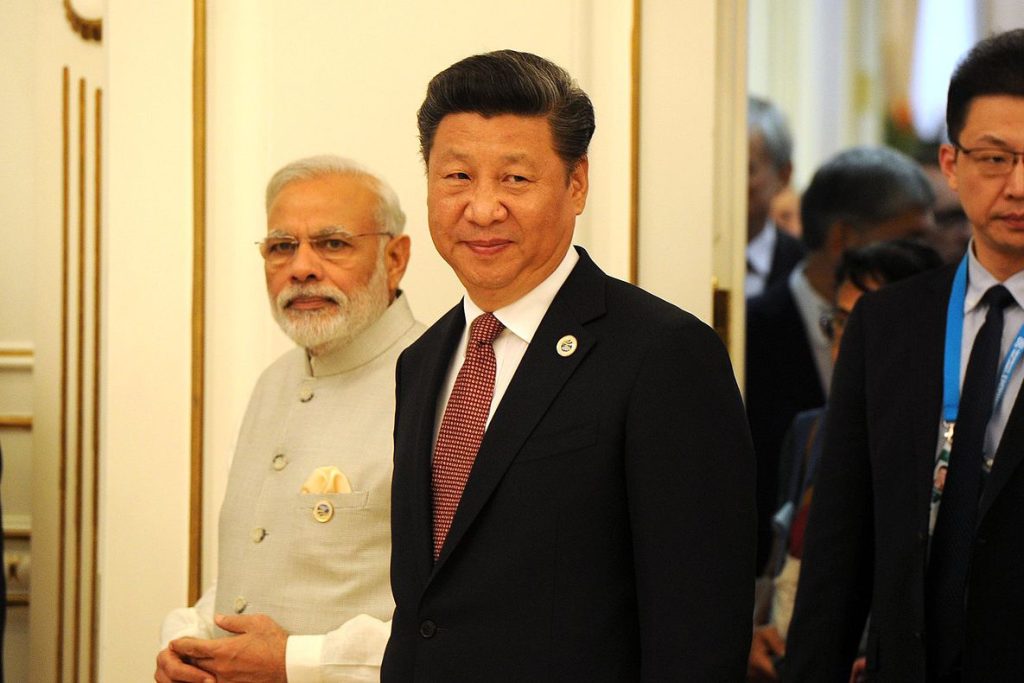
In return for closer cooperation, Xi reportedly expects India to allow greater Chinese investment in India’s manufacturing, renewable energy and auto components sectors. In other words, if Modi wants to huddle up to China for warmth after Trump gave him the cold shoulder, he will need to allow China to export more capital into India.
Two main facts came out of this summit. Firstly, for all Modi’s posturing about Atmanirbhar Bharat – a self-reliant India as a true world power – Indian capitalism has revealed its dependency on bigger economies. Indeed, Modi has been playing a multipolar balancing act for years. India’s total trade with the US, China, and Russia surged from $152 billion in 2014 to $319 billion in 2024. Even before Trump’s tariffs, India’s trade deficit with China ballooned to $99 billion in 2025 (40 percent of its total) due to its reliance on Chinese components for its critical technology sector. This is despite the two nations literally killing each other’s soldiers just five years ago.
Secondly, this summit reveals how Trump’s actions are helping to reshape world relations. His erratic and aggressive trade policies are forcing allies to look for more reliable benefactors. They are also compelling smaller powers, who previously took advantage of the relative decline of US imperialism to ‘play both sides’, to unite around its primary rival, China. The 26 countries at the Tianjin summit constitute 43 percent of the world’s population and 23 percent of its GDP.
Trump, in his infinite wisdom, has even accomplished what decades of summits, declarations, and photo opportunities could not: he is giving real substance to the BRICS. Brazil, Russia, India, China, and South Africa have divergent interests. Their economies compete more than they complement one another. Yet Trump’s economic warfare is pushing them to overcome these divisions out of sheer necessity.
A domestic crisis
But despite Modi’s attempt to seek refuge with China, these new tariffs are still going to hurt. On paper, India is the world’s fifth-largest economy, and also one of the fastest growing, posting 7 percent GDP growth last year. This has been especially driven by the tech and pharmaceuticals sectors (exports which are notably exempt from Trump’s tariffs).
But the real picture is less rosy. This growth is also based on hyper-exploitation. The country is home to some of the world’s richest people, like Modi’s partners in crime Ambani and Adani, alongside medieval conditions in much of the country. India has some of the longest working hours in the world, and 400 million of its people are employed in the informal sector with no contracts, fixed hours, holidays, pensions or workplace protections.
Moreover, Modi has been carrying out an assault on India’s working class, making efforts to deregulate and liberalise India’s economy for the benefit of fatcats and multinational investors. The Deregulation Commission, established in April 2025, has set about dismantling whatever meagre protections Indian workers have managed to secure, squeezing every last drop of surplus value out of them. The new Industrial Relations Code permits bosses to fire up to 300 workers at a time, without requiring government approval (as stipulated under the previous Labour Code). Meanwhile, social welfare schemes face brutal cuts across the board.
India’s vaunted growth is based on grinding its working class for every drop of blood. It could rapidly turn into its opposite in the face of Trump’s tariffs, which affect nearly 55 percent of India’s $87 billion worth of merchandise exports to the US.
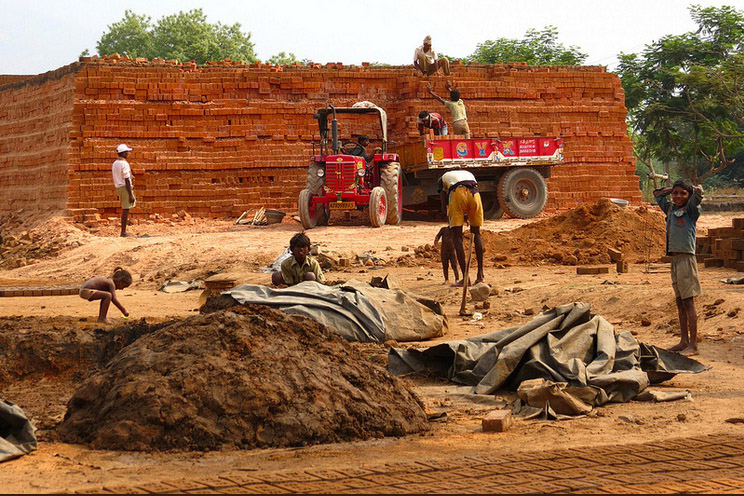
A catastrophe approaches in the textile and other labour-intensive sectors, where millions upon millions of Indians earn their daily bread across vast, complex supply chains stretching from mines, to agricultural fields, logistic transport, and export terminals. Mass unemployment will rip through the economy like a plague. Domestic consumption will decline.
Modi will be under huge pressure to intervene to protect the industries that look to suffer most from these tariffs, particularly farming. If he doesn’t, he will face a social explosion. The militant farmers’ struggle of 2020-21 was provoked by a proposed Agricultural Bill, which would have removed fixed-state prices and purchase quotas for agricultural produce. It is no accident that Modi’s first big public address after the tariffs were announced was to specifically promise support for “small businesses and farmers”.
Modi will doubtlessly employ his usual method of using nationalist and sectarian poison to divert the masses’ attention from the rotten and supplicant state of Indian capitalism. We have seen how he exploited Operation Sindoor to rally his base, as well as the spineless opposition – including the so-called ‘Communist’ parties – around the flag. Although that somewhat backfired, thanks to Trump.
These old tactics will yield diminishing returns. Patriotic slogans will not feed millions facing starvation. Religious sectarianism will not pay people’s rent. War cries against Pakistan will not stop the factories from closing. We could soon see India transformed from an ‘economic success story’ into a centre of instability in South Asia. This will, in turn, have an impact on the world situation, given India’s significant weight in the global economy.
The revolutionary alternative
It is of course possible that Modi will eventually pick up the phone and patch things up with the man in the White House. A compromise deal might be struck. He will also remain wary of his newfound friends in China, particularly regarding the security situation on India’s northern flank.
But in general, this episode is emblematic of the relative decline of US imperialism, which is creating room for its rivals to carve out their own spheres of influence. With the main imperialist power no longer able to play the role of unchallenged hegemon, we see an increasingly chaotic, multipolar world, in which the different powers wrestle for dominance, causing friends to become foes, and vice versa. India has become a key nexus for the shifting balance of forces on the world stage.
Rising class struggle is implicit in this situation. In India, as Trump’s tariffs bite (especially if there is no mitigating deal), the class contradictions in society could explode with volcanic force. The hundreds of millions of Indian workers have no stake in their ruling class’ manoeuvring between Washington, Beijing, and Moscow. The choice facing the working masses is stark but clear – continue suffering under the weight of multiple imperialisms, while Indian billionaires profit from the chaos, or wage revolutionary struggle to overthrow the entire rotten edifice.

